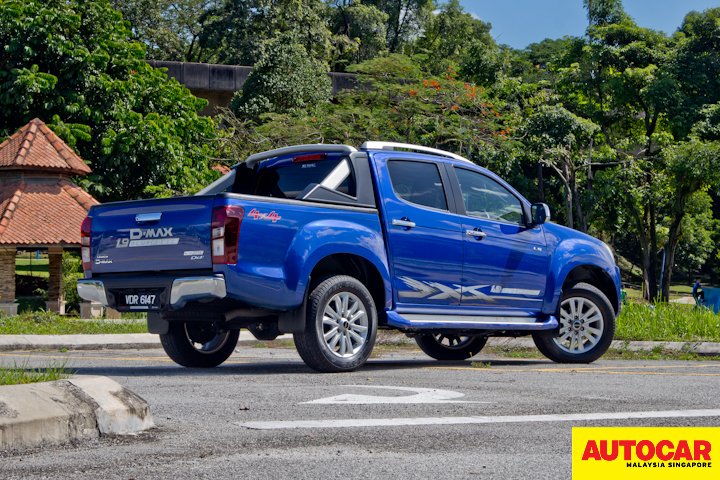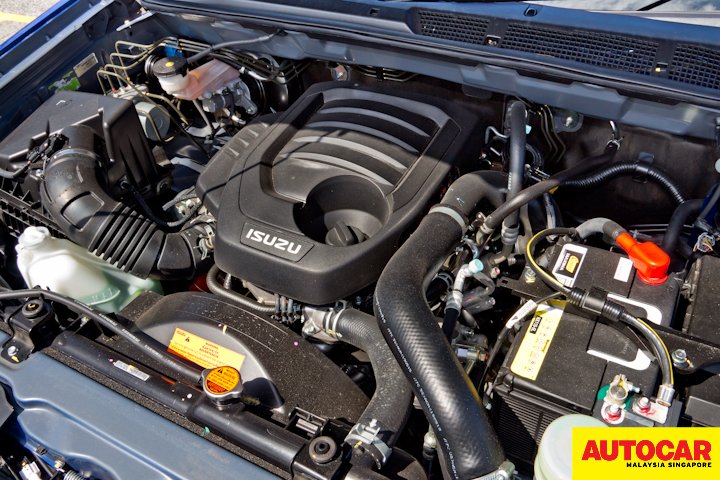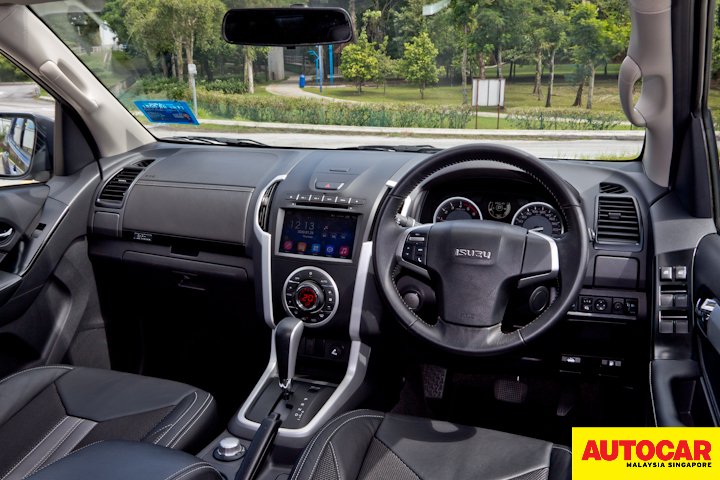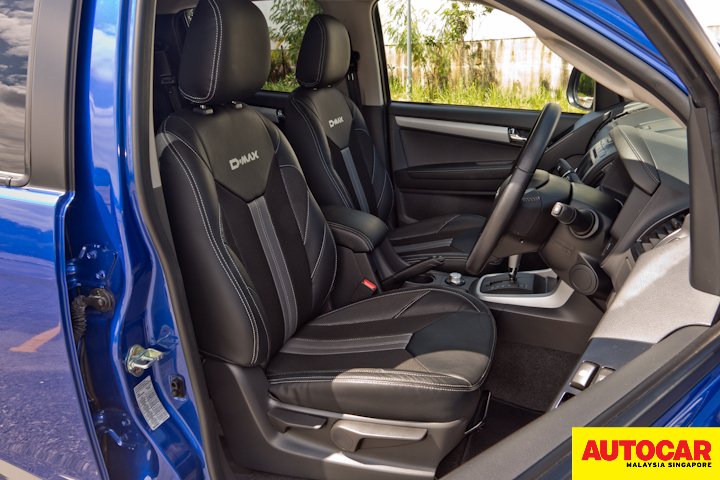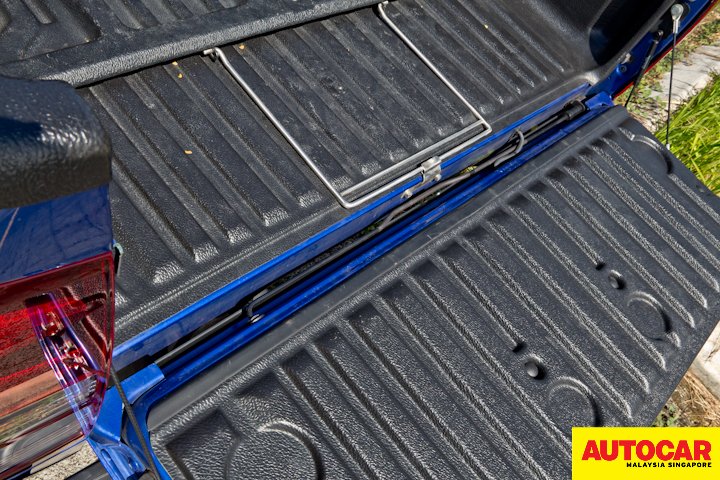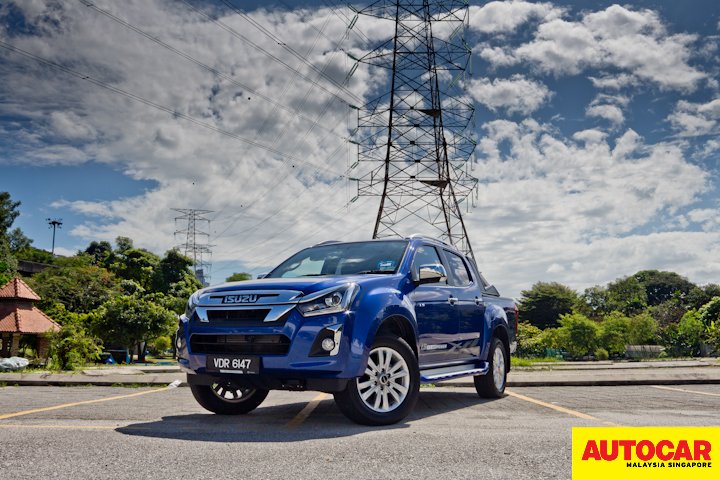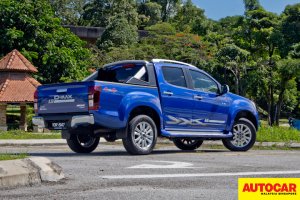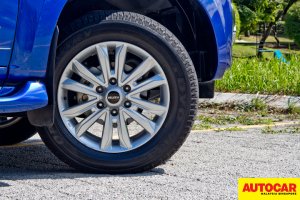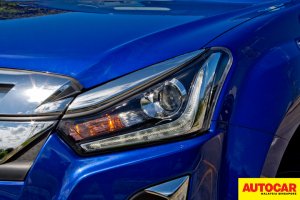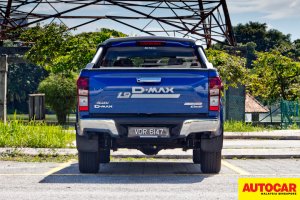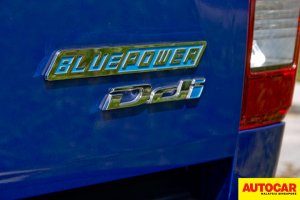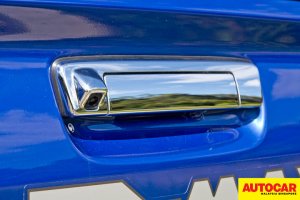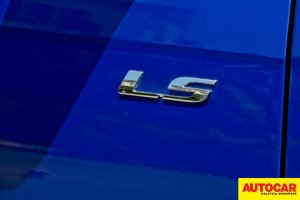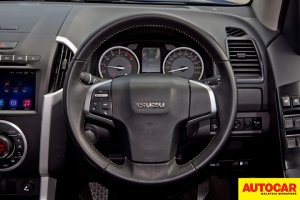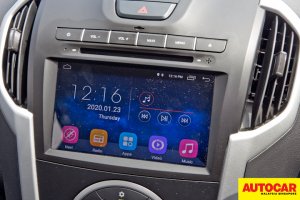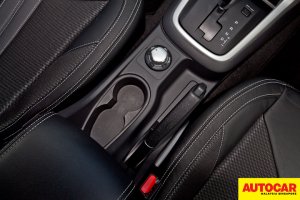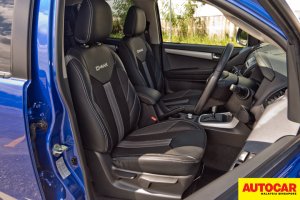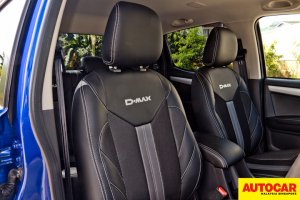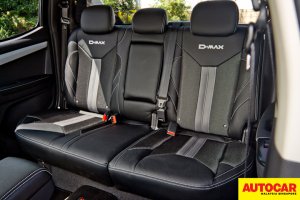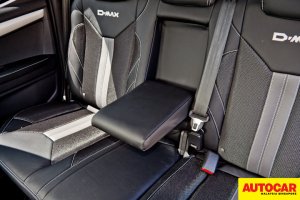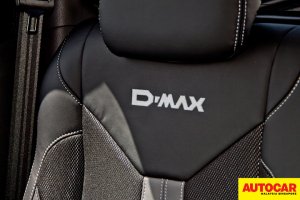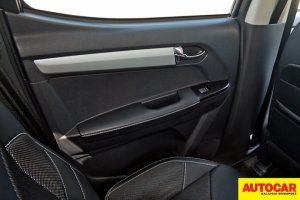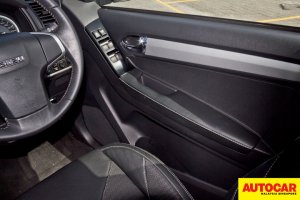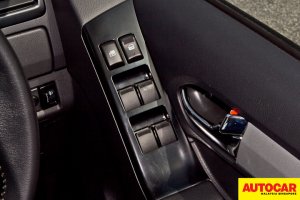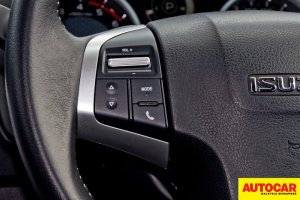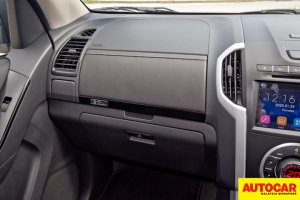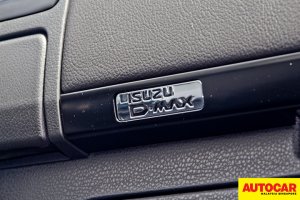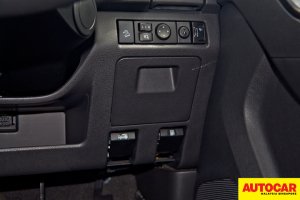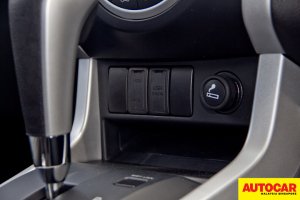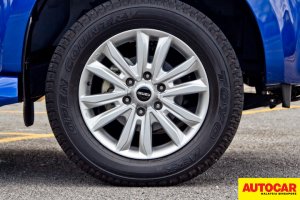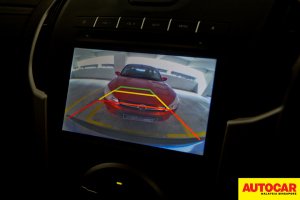
Pick-up trucks are becoming more refined as each generation goes and come. Will they become the next SUV? Breena Au finds out why it shouldn’t be that way.
If you have been paying attention as of late, you’ll notice that many pick-up trucks these days are geared towards the lifestyle market, many of which have many mid-size sedan features and refinement. The Isuzu D-Max 1.9 Ddi Blue Power, however, stayed true to itself.
That said, pick-up trucks have indeed seen plenty of improvements in refinement over the years. And brands such as Ford, Mitsubishi and Nissan are setting their sights on the urban crowd. But if it sells, why not? Then, what about the more practical and sensible aspects of a vehicle? Things like running costs and road-tax too can also influence purchasing decisions.
What is it
So, what makes the Isuzu D-Max 1.9 Ddi Blue Power stand out from the crowd? Let’s begin by addressing the “1.9” badging and stickers fitted on this Sapphire Blue midlife refreshed Isuzu D-Max test unit. It is no different than what you’ll see in the showrooms or the one you see on the road. But, what’s missing from the current D-Max line-up is the 2.5-litre engine variant which has been replaced by the compact 1.9-litre engine.
You might be wondering, why do away with the 2.5 and replacing it with the smaller engine? Is it better? Does it save fuel and my annual road-tax but sacrificing power? These are legitimate questions and the quick answer is, yes, yes and no.
There’s are reasons why the new 1.9-litre model is EEV (Energy Efficient Vehicle) certified. The new RZ4E-TC 1.9-litre VGS (Variable Geometry System) turbodiesel engine features DLC (Diamond-Like-Coating) coated fuel injectors and graphite coated pistons help to reduce friction, withstand higher pressures and temperatures, prevent cold-start engine wear.
Along with many other technical firsts, the compact turbodiesel engine makes 148 bhp at 3,600 rpm and 350 Nm of torque between 1,800 and 2,600 rpm. 10% and 9% improvement respectively over the outgoing 2.5-litre engine. Also new is the option of having a six-speed automatic or manual transmission to pair with the new engine.
As tested, the Isuzu D-Max 1.9 Ddi Blue Power (AT) achieved:
- 5.5 l/100km (18.2 km/l) Highway.
- Urban driving at 9.0 l/100km (11.1 km/l) and
- 7.8 l/100km (12.8 km/l) Combined.
Although I did not have the chance to sample the manual transmission version, the new six-speed automatic transmission does provide smooth power delivery with smooth upshifts and downshifts. What remained from the pre-facelifted model is the Terrain Command, an electronically controlled centre-differential. There’s also hill-start assist and hill descent control fitted as standard.
The living quarters of the Isuzu D-Max have seen some updates especially in terms of refinement. Here, the D-Max now have soft-touch surfaces on the door cards and dashboard, which is a familiar sight for many MU-X drivers. But having that said, the interior still has that Isuzu simplicity and toughness in its choice of materials. Also having to do without glossy surfaces such as the black satin inserts around the window switches are a nice touch.
Without having to choose between leatherette and fabric, the seats in the range-topping Isuzu D-Max 1.9 Ddi Blue Power trim have both. What’s nice about these seats is that the leatherette portion offers durability, while the fabric portion provides breathability. The plush seats offer much comfort and support, especially on long hauls. Also, the aircon is very cold, very, very cold!
Speaking of long hauls, Isuzu D-Max 1.9 Ddi Blue Power still drives much like a pick-up truck. But, the biggest difference you’ll feel is the improved ride quality and refinement. The 1.9-litre engine is evidently much quieter over the old 2.5-litre engine. Likewise, road and wind noise are minimal especially when cruising within legal highway speeds, and without experience much buffeting at speeds in excess of 170 km/h.
Without having any load on board except for the driver, the 1.9-litre engine doesn’t feel lethargic nor weak. And being a smaller sized engine, the new compact turbodiesel engine has the much-needed throttle response.
This test unit comes with the optional Tailgate Assist, which is a simple torsion beam fitted at the hinges of the tailgate. This prevents the tailgate from falling freely when opening and helps to lift the tailgate up, even with a finger (provided if you have a strong finger).
The 1.9-litre D-Max handles impressively well for a pick-up truck, which it’s able to make direction changes at will thanks to its 56 kg weight loss. And despite having a weighty hydraulic power steering, the Isuzu’s front-end is responsive to the driver’s inputs. The lack of mass greatly improved the D-Max’s agility on road. Also, the benefits of having less weight are that it requires less effort from the engine to drive away from a standstill and doesn’t require much work from the brakes.
Should I buy one?
With the ever-evolving needs from their customers, manufacturers will have to offer a package which will suit the needs of their customer base. What makes the Isuzu D-Max 1.9 Ddi Blue Power very appealing is its fuel economy, refinement, comfort, driveability and most importantly, cheaper road tax. Also, it doesn’t need to hide the fact that it’s a pick-up truck.
So, will the pick-up truck become the next SUV? Very unlikely. But what is most likely though is that they will be paving their own path ahead.
Tester’s Note: It’s quite nice to know that Isuzu has struck an equilibrium between usability and comfort with the Isuzu D-Max 1.9 Ddi Blue Power. It has seen improvements in areas of refinement and comfort, yet retains the maxims of a competent off-roader, which Isuzu knows very well that their clientele would take their products through extreme conditions.
2019 Isuzu D-Max 1.9 Ddi Blue Power 4×4 (AT)
![]()
Price RM115,799.20 (OTR)
On sale Now
Engine In-line 4 cyl, 1,898cc, VTS turbocharger, Direct-injection Diesel
Power 148 bhp @ 3,600 rpm
Torque 350 Nm @ 1,800 – 2,600 rpm
Gearbox 6-spd automatic
Kerb weight 1,910 kg
Top speed 170 km/h (tested)
0-100km/h N/A

